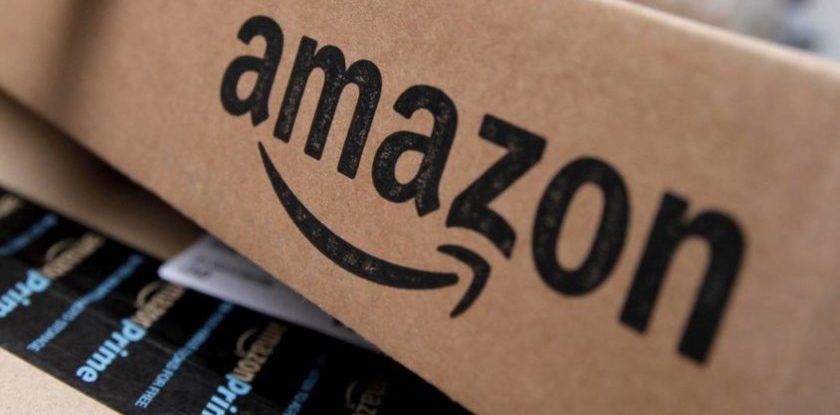M+E Daily

Amazon CFO: AWS Growth Accelerated in First Quarter
Story Highlights
The Amazon Web Services (AWS) business continued to make strides in Amazon’s first quarter (ended March 31) and played a key role in the strong results it achieved for the quarter, according to Amazon CFO Brian Olsavsky.
AWS revenue has “accelerated for the last two quarters,” he said April 26 on an earnings call with analysts. AWS revenue grew to $5.4 billion from $3.7 billion a year ago, while AWS operating income increased to $1.4 billion from $890 million, according to Amazon. But AWS operating expenses grew to $4 billion from $2.8 billion.
AWS, Fulfillment by Amazon and ads “should drive steady margin growth” for Amazon, with Amazon Prime “driving overall retail revenue growth” despite a price hike announced by the company, Wedbush Securities analyst Michael Pachter predicted April 27 in a research note.
The company is seeing “continued strong usage, both by existing customers” and those who have just signed up for AWS, Olsavsky said on the call. Amazon is also seeing an “increased pace of enterprise migrations as customers are having success with AWS and increasingly trying new services,” he told analysts, adding: “We are seeing people move more and more of their workloads to AWS and at a faster pace. And customers are moving databases to AWS as Aurora continues to grow at a very rapid clip.”
Amazon Aurora is a MySQL-compatible database engine for Amazon Relational Database Service (Amazon RDS) that combines the speed and availability of high-end commercial databases with the simplicity and cost-effectiveness of open source databases, Amazon said while introducing Aurora in 2014.
“What is driving the growth” that Amazon is seeing for AWS, “we believe, [is] the value that we create for AWS customers,” Olsavsky said on the call, adding: “We have the functionality and pace of innovation that others don’t. We have partner and ecosystem that others don’t. And we have proven operational capability and security expertise that’s highly valued to the AWS customer base.”
For the second quarter, Amazon expects “a lot of the strength areas to continue,” including consumer demand, AWS and advertising, he told analysts. But, echoing comments he made on the company’s prior earnings call, he said: “We will definitely see higher investments as we move through the year. For example, video content spend will increase year-over-year, and we’ll continue to hire software engineers.”
On the company’s fourth-quarter earnings call, he had said Amazon will continue to make major investments in its AWS, Alexa and streaming video businesses after continuing to make strides on each of them in Q4.
In its Q1 earnings news release, Amazon pointed to several AWS milestones and other accomplishments in the quarter, including the additions of GoDaddy, Shutterfly and other new enterprise customers, as well as LG Electronics (LGE) selecting AWS Internet of Things (IoT) Core services to connect all LGE Home appliances under the LG SmartThinQ brand.
Amazon also said: “Tens of thousands of customers are using AWS machine learning services, with active users increasing more than 250% in the last year, spurred by the broad adoption of Amazon SageMaker.” While introducing SageMaker last year, AWS CEO Andy Jassy said that service was “an easy way to build, train and deploy machine learning models for everyday developers.”
New customers using AWS machine learning technologies include Dow Jones, the Echo360 video learning platform, Expedia.com, the National Football League (NFL), Realtor.com, Shutterfly, Tinder, VMware and ZipRecruiter, Amazon said April 26.
AWS also announced in Q1 that all generally available AWS services and features comply with the European Union’s General Data Protection Regulation (GDPR), meaning customers can deploy AWS services as a main part of their GDPR compliance plans ahead of the GDPR May 25 enforcement deadline, Amazon said in its earnings release.
AWS also continued to expand its infrastructure, launching two Availability Zones and one Local Region in Osaka, Japan during Q1, Amazon said. AWS now operates 54 Availability Zones within 18 geographic Regions, and one Local Region, with announced plans for 12 more Availability Zones and four more regions in Bahrain, Hong Kong, Sweden and a second AWS GovCloud Region in the U.S. “coming online between now and early 2019,” Amazon said.
Total Amazon Q1 revenue grew to $51 billion from $35.7 billion a year ago, while profit increased to $1.6 billion ($3.27 a share) from $724 million ($1.48 a share).
Amazon disclosed that it’s increasing the price of its annual Prime membership from $99 to $119, effective May 11 for new members and June 16 for existing ones. Explaining the rationale for that move now, Olsavsky told analysts: “We always evaluate the price of Prime in all the countries we’re in, and we’re looking for creative ways to reach the customer…. It’s really nothing more than looking at the state of the program [and] the high benefits it’s delivering.”
Four years ago, when Amazon last increased the price of Prime, “you could get 20 million products within two days, [while] today, you could get over 100 million products within two days, and many, many, many products within one day, same day or two hours,” he noted, adding: “There’s all kinds of new features that we’ve continually added to the Prime program. It’s much different than it was in 2014. This is a reflection of that. That’s a better reflection of the cost value of the program.”
Amazon shares were trading more than 6% higher the morning of April 27, at more than $1,610 each.









